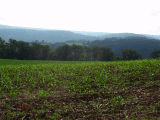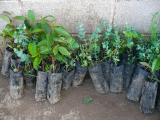More about this research...



This research aims to discover new and innovative ways to communicate and facilitate a dialog about environmental change and the effects to local communities. “Climate change is no longer a theoretical possibility but rather a certainty that is supported through scientific evidence by a diverse body of research with countless reports produced by highly credible organizations” (Agyeman et al. 2007:121). Despite the scientific evidence suggesting anthropogenic forcing of climate change it is still difficult to understand the connections between human action and environmental change. Barriers to communicating the processes, implications and risks concerned with climate change are deeply rooted and complex. The major barriers to communicating the negative effects of climate change include remoteness of impacts, lack of peer support and solution skepticism (Dilling and Moser, 2007).
The United Nations Framework Convention of Climate Change calls for (1) the development and implementation of educational and public awareness programs on climate change and its effects; (2) the public access to information on climate change and its effects; (3) the public participation in addressing climate change and its effects; and (4) developing adequate responses (UNFCCC 1994, article 6 paragraph i-iii). New technology available on the Internet has the potential to assist and enhance public participation in addressing climate change, as well as developing education and public awareness programs.
During the early days of the Internet, users were only able to view information. Adding content was limited to computer programers and those with the money to pay for servers, computer programers, and other infrastructure needed to host a site. This is not the case any longer. Now anyone with Internet access has the ability to post content on the web. This shift in the way in which we interact with the Internet is called Web 2.0 (link to Web 2.0 book) It is free to start a blog, join social networking site such as Facebook and Myspace, and add content to online maps on the geoweb!
Geographic Information Science (GIScience) has provided an invaluable set of tools and solutions for numerous environmental, human rights, and political struggles on multiple scales. The Internet can allow anyone to post information important to them for everyone with Internet access to view. Maps available online are a great way to share local information. The strength of the Geoweb is driven by the users.
The Geoweb encompasses interactive mapping services available on the Internet. Traditional map typically display quantitative data like temperature or elevation. The geoweb offers a new way of sharing information. With the geoweb users can now upload information about themselves and about places that are important to them. Users can share songs, pictures, slideshows and movies and put them on a map. Check out this map on google maps that have youtube videos associated with different parts of Barbados. Or check out this map my friends and I made of our Favourite Places in Montreal. Users no longer have to be a computer programmer or a trained cartographer to manipulate an online map. Explore this website to learn more about the capabilities of the Geoweb and how Barbadians can use this tool to share their local knowledge of environmental change. If you would like to read more about the Geoweb check out this article from the economist.
Could local knowledge about environmental change posted on an interactive map available on the Internet help communicate the consequences of climate change?
Citations
Agyeman, J., Bob Doppelt, Kathy Lynn, Halida Hatic (2007). “The Climate-Justice Link: Communicating Risk with Low Income and Minority Audiences.” Creating a Climate for Change: Communicating Climate Change and Facilitating Social Change. S.A.L.D. Moser. Cambridge, UK. Cambridge Press: 119-138.
Dilling, L.A.S.C. Moser (2007). Creating a Climate for Change: Communicating Climate Change and Facilitating Social Change. Cambridge, UK. Cambridge Press: 1-27.
United Nations Framework Convention on Climate Change. (1994). UN, New York. Retrieved Nov. 21, 2007, from http://unfccc.int/resource/docs/convkp/converng.pdf